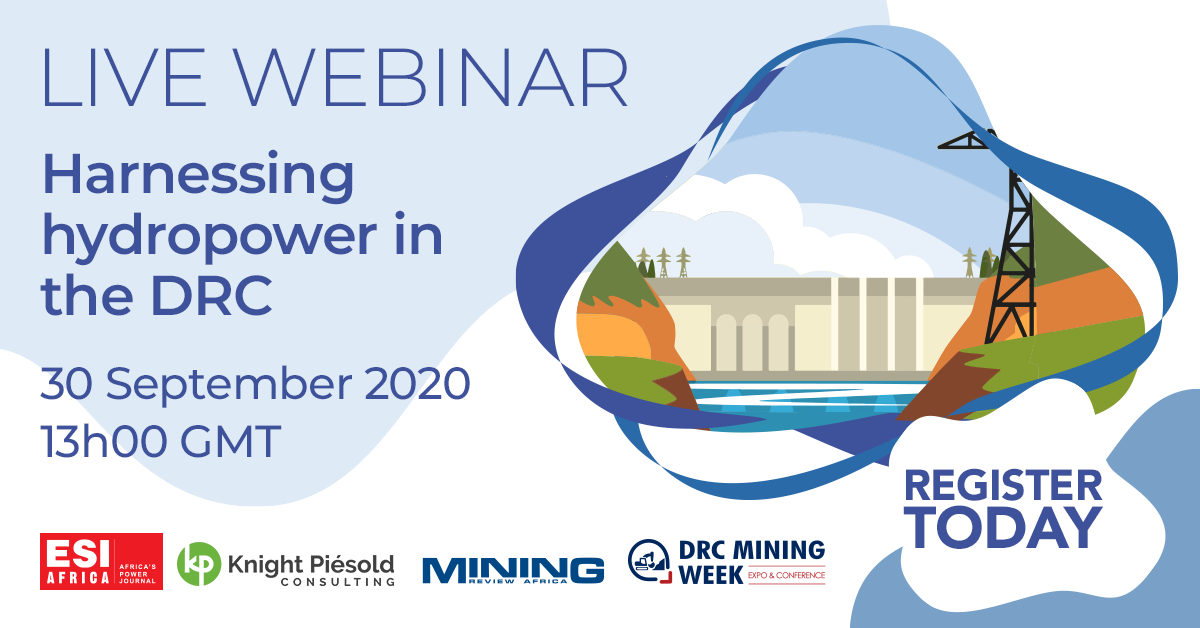
Harnessing Hydropower in the DRC
Webinar Moderator: Mining Review Africa
Date: September 30, 2020
Hydroelectric power, whether it be pumped storage or run-of-river, is a low cost, clean form of energy in areas with rivers or dams. The Democratic Republic of Congo (DRC), with its abundant water resources, is ideally placed to support the development of both small and large-scale hydropower schemes.
Hydropower has already successfully been used as a source of power by the mining industry, an example of which is the Azambi Hydropower Project, the third hydropower project developed by Barrick’s Kibali gold mine. Beyond this, other players in the industry are considering the viability of powering their mines using this environment-friendly technology.
Join Mining Review Africa, ESI Africa, DRC Mining Week, and Knight Piésold as we examine the potential of hydroelectric power in the DRC, for the benefit of the mining industry and the surrounding communities.
Key discussion points will include:
- The country’s installed capacity and availability of hydroelectric power
- How to best harness hydropower in the DRC for the benefit of the mining industry and the surrounding communities
- How to ensure the most sustainable and beneficial hydropower projects
- Challenges/opportunities within the current hydroelectric power system
- Potential future hydropower sites and projects currently under development in the DRC
Upstream constructed tailings storage facilities (TSFs) have been banned in Chile, Peru and Brazil and there are many other jurisdictions where such designs may not be accepted by Authorities, especially in wet climates and in highly seismically active areas.
Panel:
Robert Greyling, Section Manager: Dams & Hydropower | Knight Piésold
Getty Kasole, Senior Technical Advisor | Power Africa Off-grid Project DRC
